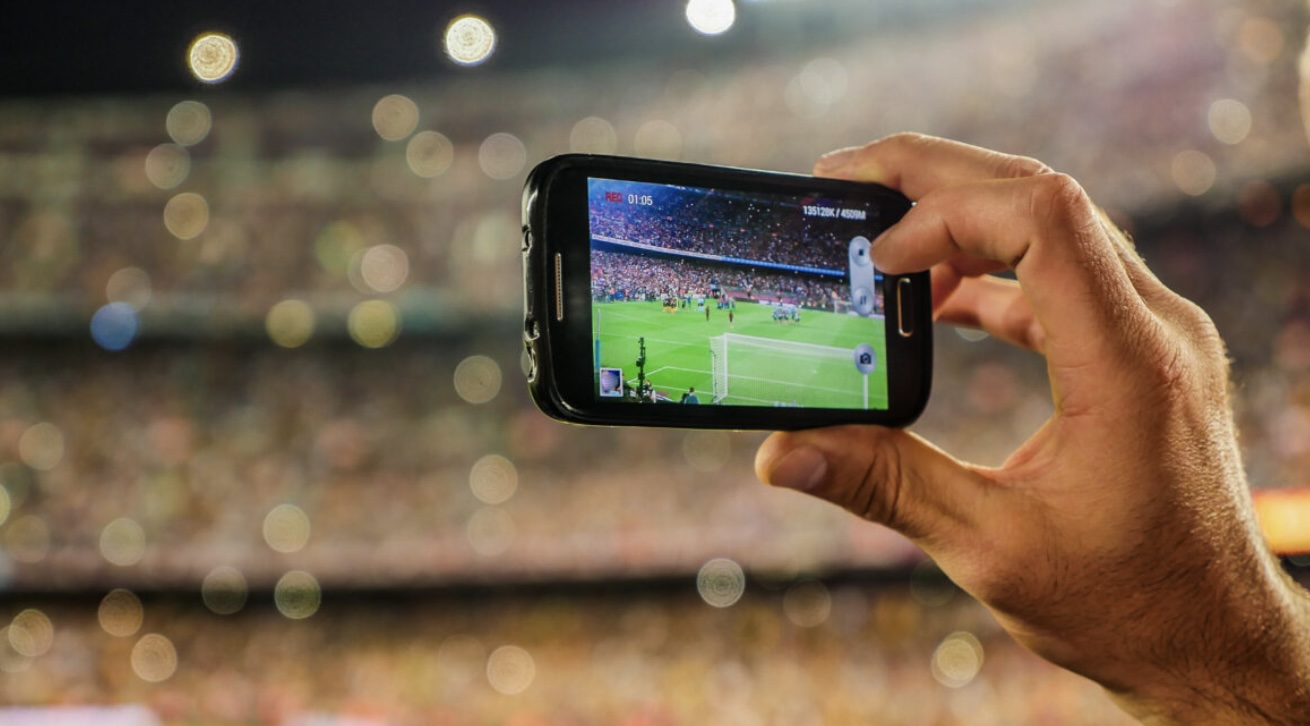In recent years, social media has revolutionized how we experience and interact with sports. Once limited to game-day broadcasts and post-game recaps, fans now have 24/7 access to their favorite teams, athletes, and even behind-the-scenes moments. Platforms like Instagram, Twitter, and TikTok have given rise to a new era of sports, where athletes and teams build their brands and engage directly with fans worldwide. This shift has not only redefined fan engagement but has also created unprecedented opportunities for sports organizations to grow their reach and for athletes to establish personal brands. However, this digital evolution brings both excitement and challenges, as the pressures of constant connectivity and the demand for authenticity clash with the need for professional boundaries. In this article, we explore how social media is reshaping the modern sports landscape, diving into its effects on branding, fan interaction, media coverage, and the ethical considerations it presents.
Building Athlete and Team Brands
In today’s digital landscape, athletes and teams are no longer solely defined by their on-field performance. Social media has empowered them to create compelling personal and team brands that resonate globally, extending their influence far beyond the stadium. Platforms like Instagram and Twitter allow athletes to share their journeys, insights, and personal stories directly with millions of followers, building loyalty and a deeper connection with fans. This form of branding goes beyond conventional media exposure, allowing athletes to develop an authentic image that reflects their personalities, values, and interests.
Teams, too, leverage social media to shape their brand identity, from exclusive content on training sessions to showcasing community outreach and behind-the-scenes glimpses. By connecting emotionally with fans, teams are creating a sense of belonging and loyalty that traditional media could never fully capture. Moreover, the rise of unique partnerships and collaborations in this space has enabled both athletes and teams to explore new marketing opportunities, including engaging with digital gaming platforms such as PG Games Fortune Tiger, this organic blend of sports, personal branding, and entertainment is transforming the sports industry, making it more interactive and personalized than ever.
For athletes, building a strong online presence is a powerful tool not only for fan engagement but also for securing endorsements and sponsorships. Unlike in previous decades, where endorsement deals were largely based on athletic performance alone, today’s brands seek athletes who resonate with large, dedicated online audiences. An athlete’s social media following often influences endorsement value, with companies eager to partner with individuals who align with their brand values and have authentic connections with fans. As athletes share more of their personal lives and values, they cultivate trust and relatability, making their brand partnerships feel genuine to followers and ultimately driving higher engagement for both the athlete and the sponsoring brand.
Teams, on the other hand, benefit from social media by fostering a unified fan base that transcends geographical boundaries. Through interactive content like live Q&As, fan polls, and game highlights, teams create a virtual stadium experience that fans can enjoy from anywhere. This strategy keeps supporters engaged throughout the season and builds anticipation for key games and events. By crafting a dynamic digital presence, teams can also attract younger audiences who are increasingly tuning in online rather than through traditional media. Together, athletes and teams are leveraging social media to expand their influence, making it clear that in the modern sports era, success isn’t just about winning on the field—it’s about building a brand that wins over hearts and minds across the digital world.
Enhancing Fan Engagement and Interaction
Social media has redefined the relationship between sports teams, athletes, and their fans, turning what was once a one-way interaction into a dynamic conversation. Today, fans aren’t merely spectators; they are part of the narrative, actively participating in the sports experience through comments, live chats, and real-time feedback. Platforms like Twitter and Instagram allow fans to interact during games, celebrate victories, and even discuss pivotal moments as they happen. This direct connection not only builds a sense of community among fans but also brings them closer to the athletes and teams they admire, breaking down barriers that once separated players from their audience.
In addition to traditional platforms, sports organizations and influencers are creatively using interactive content to further elevate engagement. From polls on game predictions to exclusive giveaways and interactive trivia, these elements keep fans invested even outside of game time. Many teams also engage fans with digital collaborations, offering fans a chance to feel like they’re in the game. Such innovations are part of the broader trend of fan-centered experiences, much like the immersive elements found in the Mines casino game, where participants engage in real-time and feel the thrill of instant involvement. By continuously seeking fresh ways to engage, teams and athletes ensure that fans remain at the heart of the sports experience, transforming viewership into a highly interactive journey.
Live streaming and real-time updates have further enriched fan engagement, allowing followers to feel present in every moment, even if they’re miles away from the stadium. Platforms like YouTube and Twitch are increasingly used by teams and athletes to offer live behind-the-scenes content, training sessions, and player interviews. This transparency and accessibility have redefined what it means to be a fan, offering an insider’s view that was previously unimaginable. Fans can now comment in real-time, ask questions, and even receive responses from their favorite players. This level of interaction not only strengthens fan loyalty but also builds an emotional connection that extends beyond wins and losses.
Social media has also given rise to fan-generated content, which has become a significant part of modern fan engagement. From creating hashtags that trend worldwide to producing fan art and memes, supporters now contribute to the narrative surrounding their favorite teams and players. Many clubs actively encourage this creativity by sharing and highlighting fan-made content on their official channels, giving fans a sense of recognition and ownership. This user-generated content enriches the community and fosters a deeper sense of belonging, turning fans into advocates who feel personally invested in the team’s brand and success. The enthusiasm fans bring, combined with the team’s acknowledgment, creates a powerful cycle of engagement that can boost morale, especially during challenging seasons.
Innovative technologies like augmented reality (AR) and virtual reality (VR) are pushing fan interaction into new dimensions. Through VR, fans can virtually experience sitting courtside at a game, while AR can bring player stats and interactive elements right to their devices during live broadcasts. Teams are increasingly exploring these technologies to offer experiences that go beyond traditional viewing, making fans feel like they are part of the action. This shift toward immersive engagement mirrors the excitement and interactivity found in modern gaming, where users crave that real-time thrill. By continually adapting and embracing these innovations, sports teams are setting new standards in fan engagement, creating a multi-dimensional experience that caters to the digital age.
The Impact on Sports Media and Reporting
The rise of social media has fundamentally transformed sports media and reporting, creating a fast-paced, interactive landscape that prioritizes immediacy and audience engagement. Unlike traditional reporting, which once relied heavily on post-game recaps and feature stories in print, today’s sports media thrives on instant updates and real-time commentary. Platforms like Twitter and Instagram allow journalists to report live from events, share quick analysis, and interact directly with fans, giving audiences a play-by-play experience as the action unfolds. This shift toward instant news has not only changed the speed at which stories are published but has also raised the bar for journalists, who now face pressure to deliver timely and accurate information without the luxury of extensive editorial review.
Another major shift is the rise of independent voices and influencers who shape sports narratives alongside traditional journalists. Social media has given a platform to fans, analysts, and former players, allowing them to share unique perspectives and insights directly with the public. This democratization of sports commentary has introduced a wide range of opinions and viewpoints, creating a diverse media environment where fans can follow multiple sources for news and analysis. Influencers and content creators often bring a more personal and engaging style to reporting, which resonates with younger audiences and challenges traditional media outlets to adapt to these new forms of storytelling. As a result, mainstream media now often collaborates with influencers or incorporates user-generated content to maintain relevance in an increasingly fragmented media landscape.
However, the immediacy of social media reporting also introduces significant challenges, particularly concerning accuracy and accountability. The drive to break news first can sometimes lead to misinformation, as journalists and influencers may prioritize speed over verification. Rumors can spread quickly, causing confusion and, at times, damaging reputations before facts are confirmed. This environment has placed an even greater emphasis on media literacy among fans, who must now discern credible sources from sensationalized content. In response, many sports media outlets are re-evaluating their fact-checking processes and transparency policies, striving to balance the benefits of instant news with the responsibility of accurate reporting. The evolving landscape of sports media thus reflects both the power and the pitfalls of digital transformation, reshaping how fans experience and interpret the world of sports.
Challenges and Ethical Considerations
The integration of social media into sports has undoubtedly created new opportunities, but it has also introduced significant challenges and ethical considerations for athletes, teams, and the media. One of the primary challenges is the constant public scrutiny athletes face, with fans and critics able to comment on every aspect of their lives in real-time. The pressure to maintain a polished public image can be mentally taxing, as athletes feel compelled to project an idealized version of themselves. This pressure is heightened by the risk of backlash or “cancel culture,” where a single controversial post or opinion can lead to widespread criticism and, in severe cases, impact their careers. Balancing authenticity with professionalism becomes a delicate act as athletes try to connect with fans while safeguarding their personal lives.
Privacy is another major concern, as the boundary between public and private life becomes increasingly blurred. Many athletes find that social media leaves them vulnerable to invasions of privacy, with fans feeling entitled to know every detail of their lives, both on and off the field. While platforms allow athletes to control what they share, the constant demand for updates can be overwhelming, leading some to feel as if they are living under a microscope. This issue extends to family members and loved ones, who may be drawn into the public eye simply because of their association with a high-profile athlete. As a result, teams and organizations are increasingly considering how to support their athletes’ mental well-being and privacy while still engaging fans.
Another ethical consideration lies in the spread of misinformation and the responsibility of influencers, journalists, and fans to share accurate information. In the race to go viral or be the first to break a story, facts can sometimes take a back seat, leading to rumors and unverified reports. This can harm reputations, alter public perception, and impact team dynamics. Furthermore, the prevalence of social media gives rise to issues like online harassment and cyberbullying, with some athletes facing targeted abuse after a poor performance or controversial decision. Many sports organizations are now implementing stricter guidelines and support systems to protect athletes from these negative impacts, recognizing the need for a safer, more respectful digital environment. As social media continues to shape the sports industry, addressing these challenges is crucial to ensuring a balanced and ethical approach to fan engagement.





